As part of the celebration of the 70th anniversary of Topps baseball cards, we've asked fans (as well as our staff) to submit their all-time favorite baseball cards, and we've broken them down by team. We'll be revealing submissions regularly throughout the season, ranging from the famous to the weird, and everything in between.
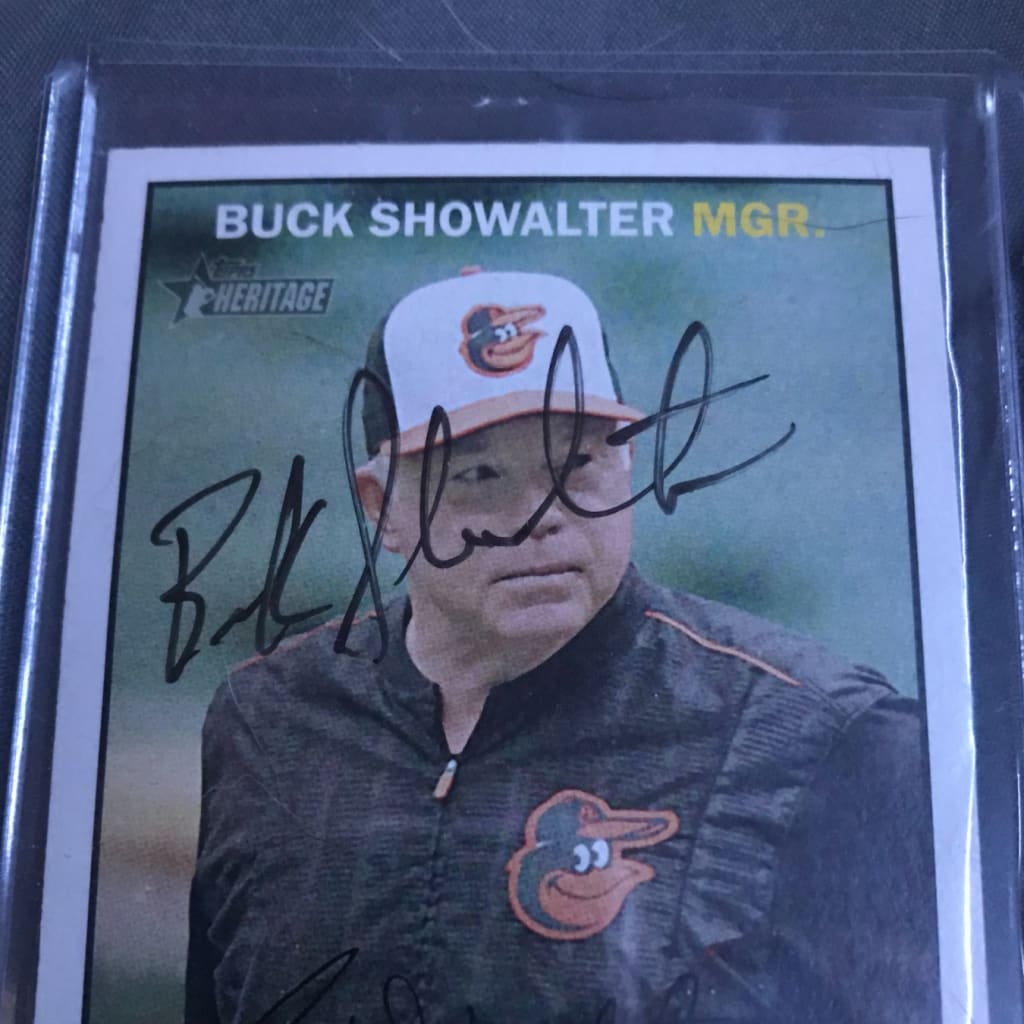
Buck Showalter, 2018 Topps Heritage
Showalter’s tenure with the Orioles will be remembered for one game in particular -- the 2016 American League Wild Card Game, an 11-inning affair that resulted in Baltimore losing, 5-2, to the Blue Jays, on Edwin Encarnación's walk-off homer. What’s memorable, and not in a way Showalter would want, is that the O’s skipper used seven pitchers in the contest and none of them were named Zack Britton. Britton was the most dominant closer in the game that year, posting a 0.54 ERA with 47 saves in 69 games.
But Showalter was a successful manager in his day -- his managerial record in 20 seasons, over which he helmed the Yankees, D-backs and Rangers in addition to the Orioles, is 1,551-1,517 (.506). He guided the Yankees until 1995, the year before the Bronx Bombers won their first World Series in 18 years, and was Arizona’s first manager, leading the D-backs through 2000, the year before they won it all. Showalter led Baltimore to the postseason in 2012, ’14 and ’16.
Trevor M. of York, Penn., submitted this card in our survey.
“It’s my favorite because it’s my favorite team and also because I got it signed in person at Orioles fanfest in 2018,” he wrote. -- Manny Randhawa
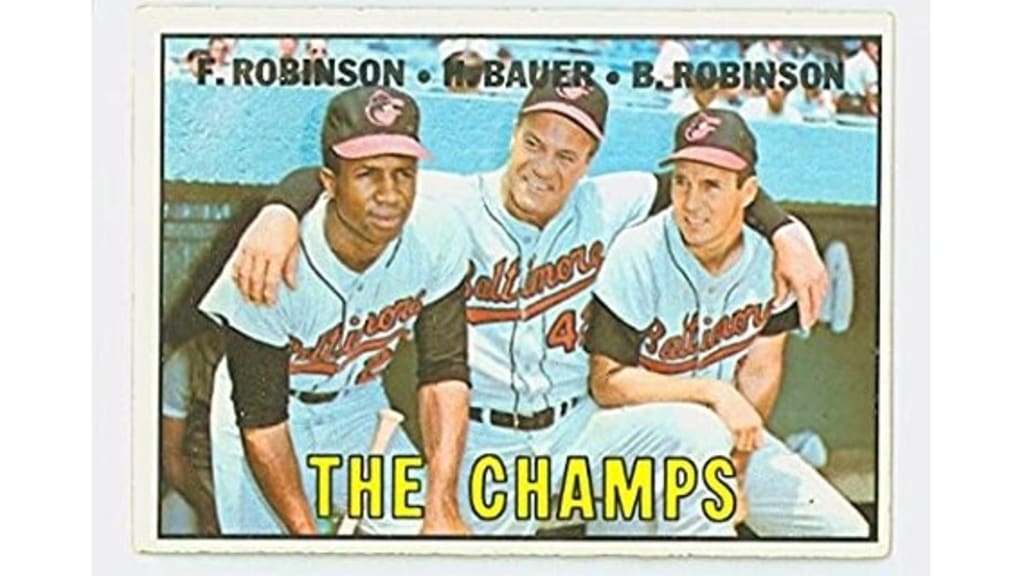
Frank Robinson, Hank Bauer and Brooks Robinson, 1967 Topps
After acquiring Frank Robinson in a trade with the Reds, the Orioles won the AL pennant behind Robinson’s Triple Crown season and went on to win the first World Series title in franchise history with a sweep over the Dodgers.
The following year, Topps commemorated the O’s monumental victory with card No. 1 in the 1967 set. The card shows manager Hank Bauer flanked by his two star position players: Frank Robinson and Brooks Robinson. The bottom of the card simply says, “The Champs.”
It was submitted by Baltimore’s John C. Shukie, who wrote:
“The World Series of 1966 was so special. I also remember that this was the first time that I ever wagered on a sporting event. I bet a classmate $1 that the O's would beat the Dodgers, which they did in four games. Best dollar I ever won! That was well over 50 years ago and I still attend many Orioles games every year as a season plan holder. I have a large baseball card collection but this card means more to me than others that are worth a lot more in cash value. I have met Brooks Robinson a number of times over the years and those have been very memorable for me. I did meet Frank on one occasion also. I will always be an Orioles fan and will always remember that first championship.” -- Thomas Harrigan
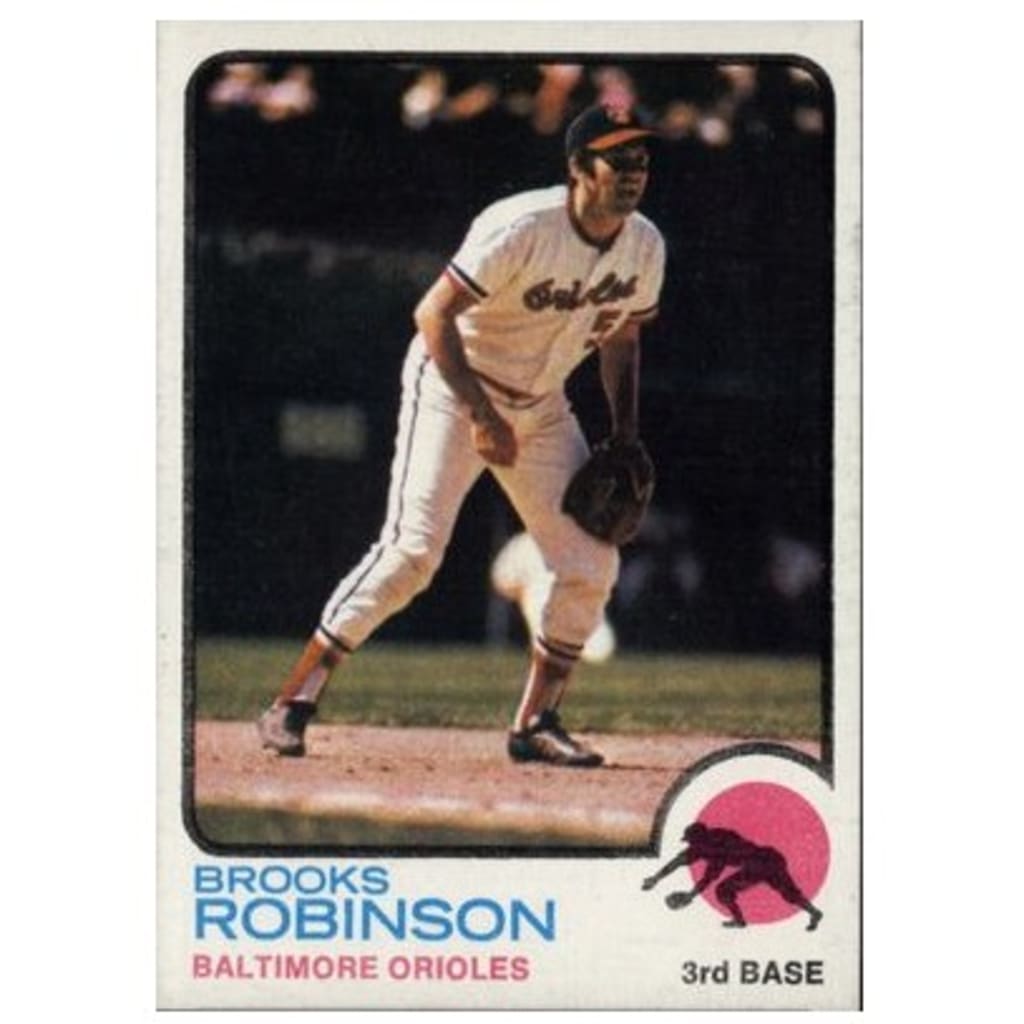
Brooks Robinson, 1973 Topps
Regarded as one of the greatest defensive players in history, Robinson won 16 Gold Glove Awards in his career. His ‘73 Topps card features a great shot of the Hall of Fame third baseman in a set position at the hot corner.
The card was submitted by Baltimore’s Phil Lederer, whose car license plate reads “HOT CRNR” in honor of Robinson.
“I've been obsessed with baseball ever since I can remember, and I still have quite a few of the cards I collected as a kid,” Lederer wrote. “My favorite is this 1973 autographed Brooks Robinson card. Growing up in the ‘60s, I was fortunate enough to experience the Orioles in their heyday, and like many fans of the O's back then, Brooks was my favorite player.”
-- Thomas Harrigan
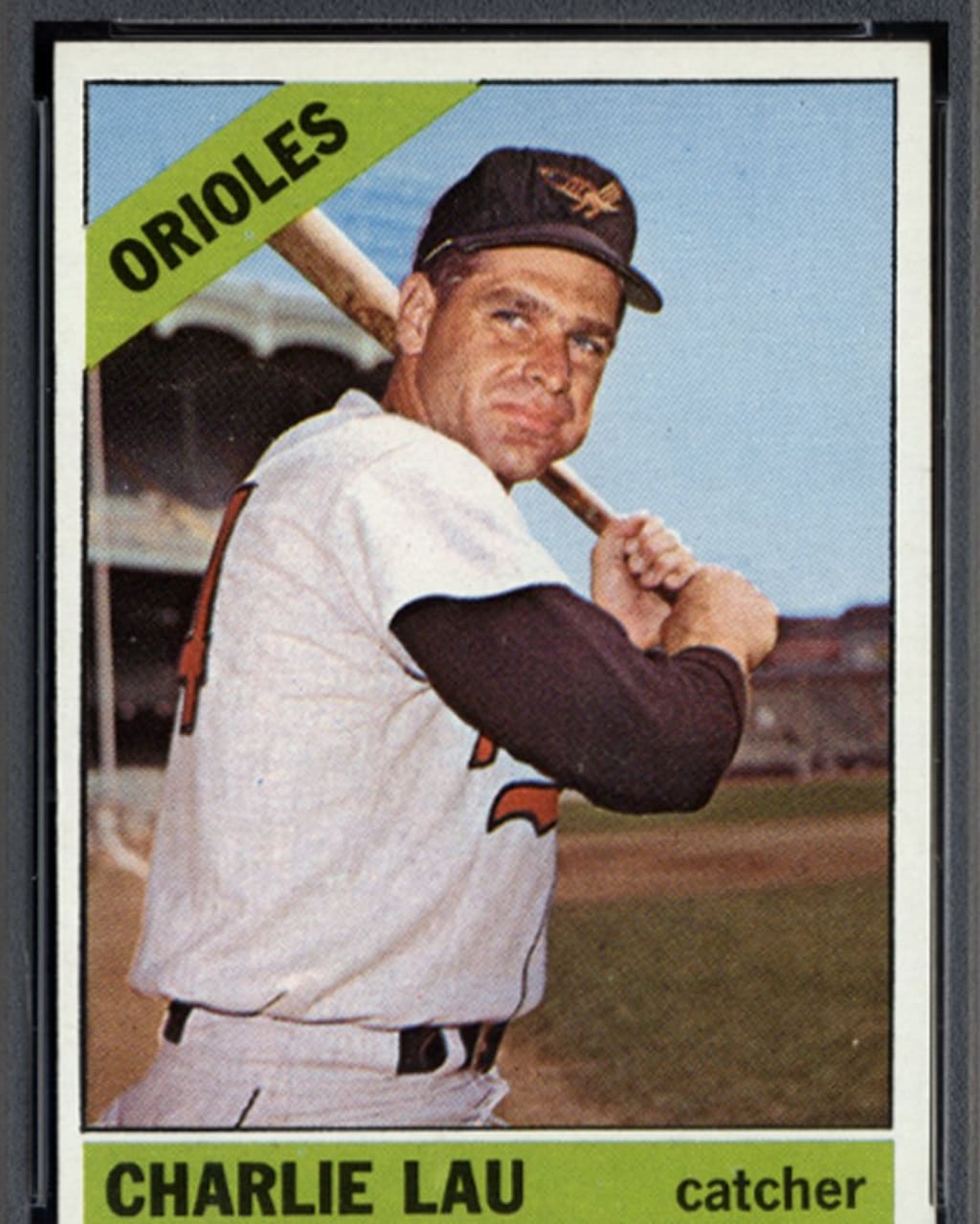
Charlie Lau, 1966 Topps
Many baseball fans may never have heard of Lau. But you can be assured that a lot of baseball players -- particularly hitters -- know exactly who he is.
Lau was a catcher in the Majors from 1956-67, mostly with the Orioles. But after his playing career, he became a very well-respected hitting coach who had quite a group of names in his catalog of pupils, including Hall of Famer George Brett.
This 1966 Topps card of Lau, submitted in our survey by Dan M., shows him in his hitting stance, which looks eerily similar to Brett’s. Must be a coincidence.
“First card I ever had as a kid in the ’60s,” Dan wrote. “Did not know who he was until later when he became a hitting coach guru for the Royals and coached George Brett.” -- Manny Randhawa
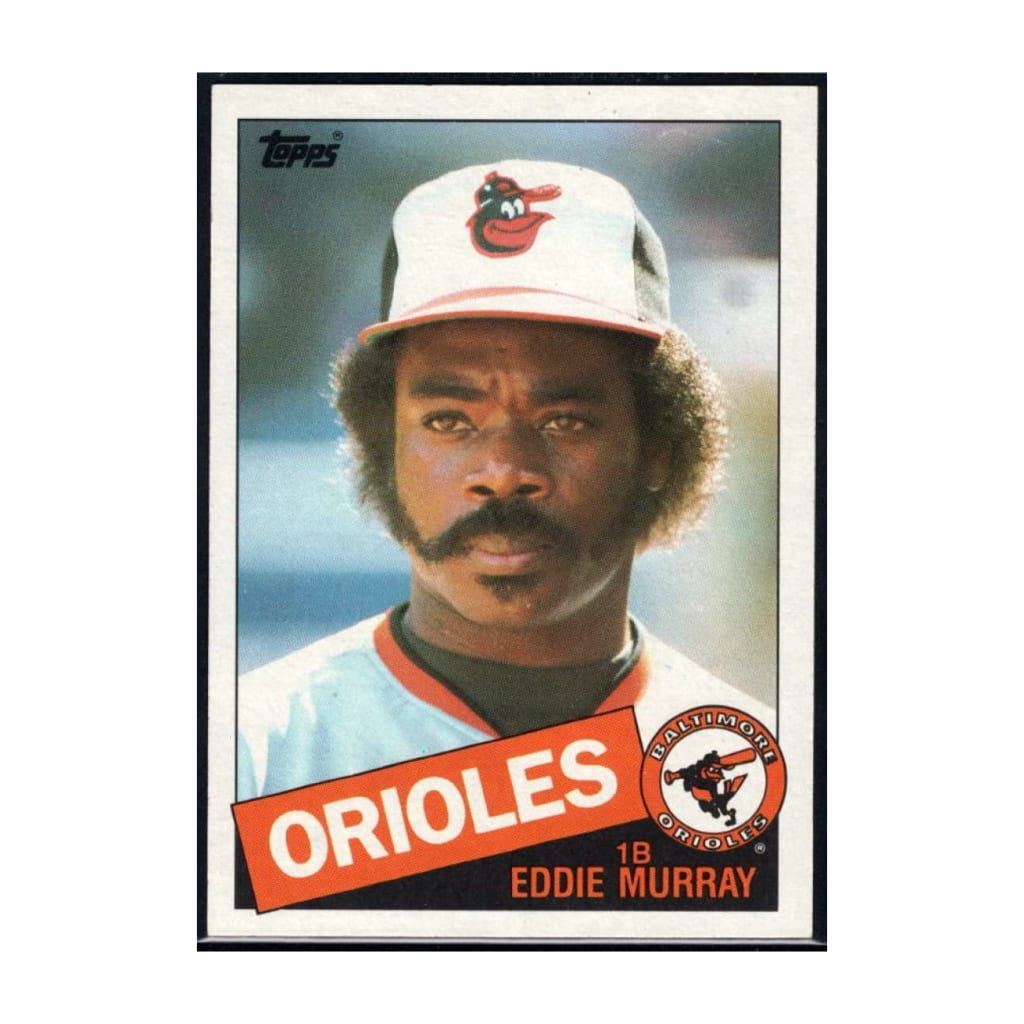
Best Orioles facial hair card: Eddie Murray, 1985 Topps
Now that's a mustache. The full 'stache connected to the sideburns, which some Googling will tell you is known as "friendly mutton chops."
This card is a pure headshot of Murray, too, so it's all about the facial hair.
The 1985 season was Murray's fifth of six straight All-Star seasons in Baltimore from 1981-86. He hit .297 with 31 home runs and 124 RBIs that year and finished fifth in AL MVP voting.
Murray's '85 Topps card is the perfect one to headline any O's fan's collection -- which is exactly the case for Matthew Loughran of Falls Church, Va.: "As a kid growing up in the Maryland suburbs of Washington, D.C. and born three years after the Senators left town, the Baltimore Orioles were my team growing up. And Eddie Murray was my favorite player," he explains.
"In 1985, I was 10 years old and I made it my mission to get the entire team in Topps cards. I didn't accomplish that goal, but I ran through a LOT of terrible bubble gum in the process. I did however get an Eddie Murray card and that became the centerpiece of my collection."

Jim Palmer, 1966 Topps
After breaking in with the O's as a 19-year-old in '65, a fresh-faced Palmer made his baseball-card debut in the '66 Topps set.
The future Hall of Famer's cap features the short-lived chirping Oriole logo the team wore in '64-65 (it was an updated version of Baltimore's cap logo from '54-63) before switching to the iconic cartoon bird that was revived for its current uniform set.
Patrick Graham of Cortland, N.Y., submitted the card, noting that the Orioles were his favorite team, and Palmer his favorite player, as a kid, "so this was a special card for me."
The blurb on the back of the card erroneously refers to Palmer as a left-hander, something Graham pointed out in his submission. -- Thomas Harrigan
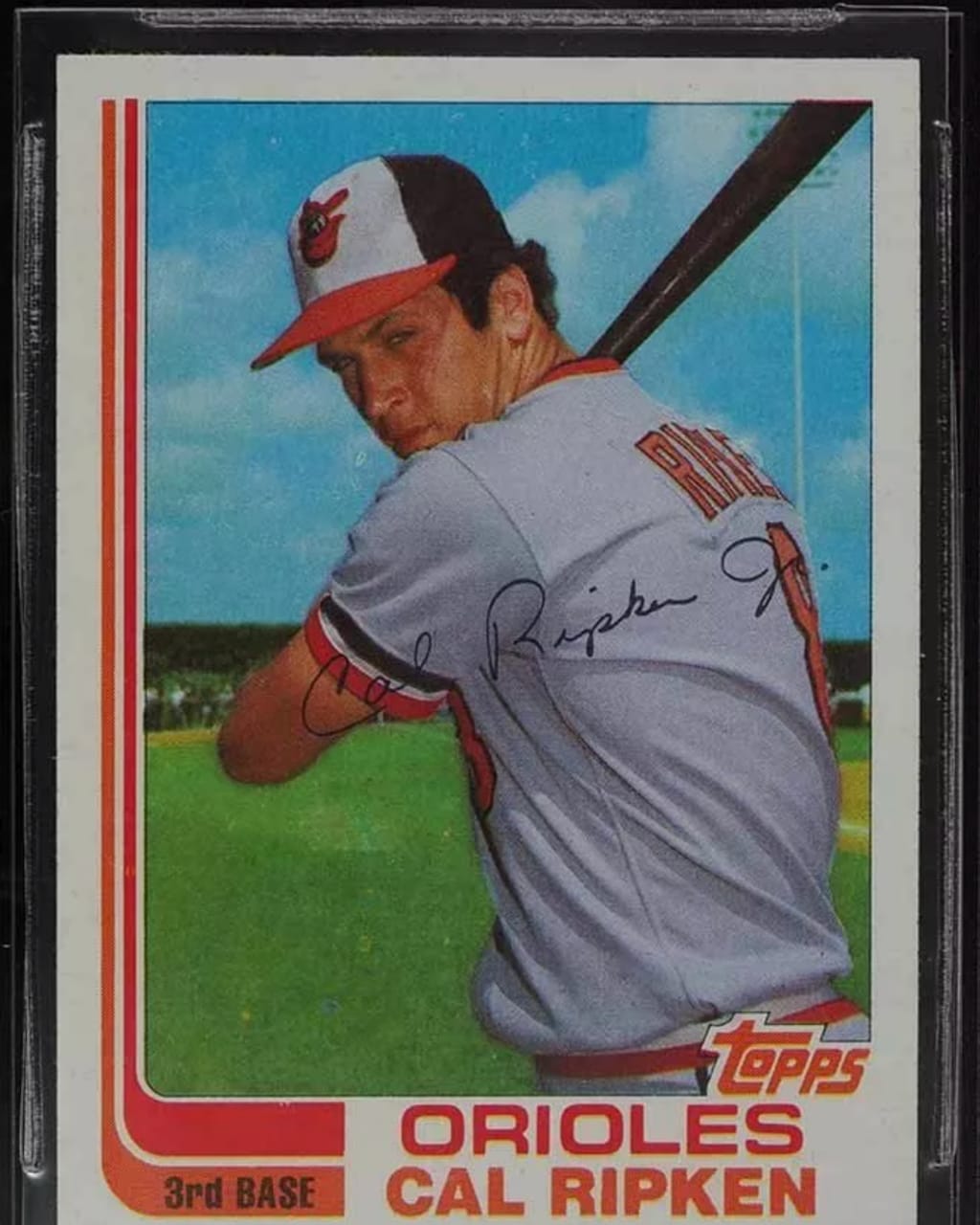
Cal Ripken Jr., 1982 Topps
Rookie cards are special. Rookie cards of Hall of Famers are even more special. But when you own a rookie card of someone who owns a record that is unlikely to be broken, that’s on another level. That’s the case for Mike C. of Auburn, New York, who submitted this Ripken rookie card in our survey.
The 1982 Topps set is attractive for its symmetry, with the player’s name and team at the bottom beneath the Topps logo, and his position listed on a colored border coming down from the left side of the card. With Ripken’s card, there’s even more symmetry, in the look on the Iron Man’s face as he begins his MLB career.
The look conveys determination, and it’s determination that resulted in Ripken breaking Lou Gehrig’s consecutive games played streak of 2,131. Ripken’s streak went on to reach 2,632 games before he finally took a day off on Sept. 20, 1998. -- Manny Randhawa
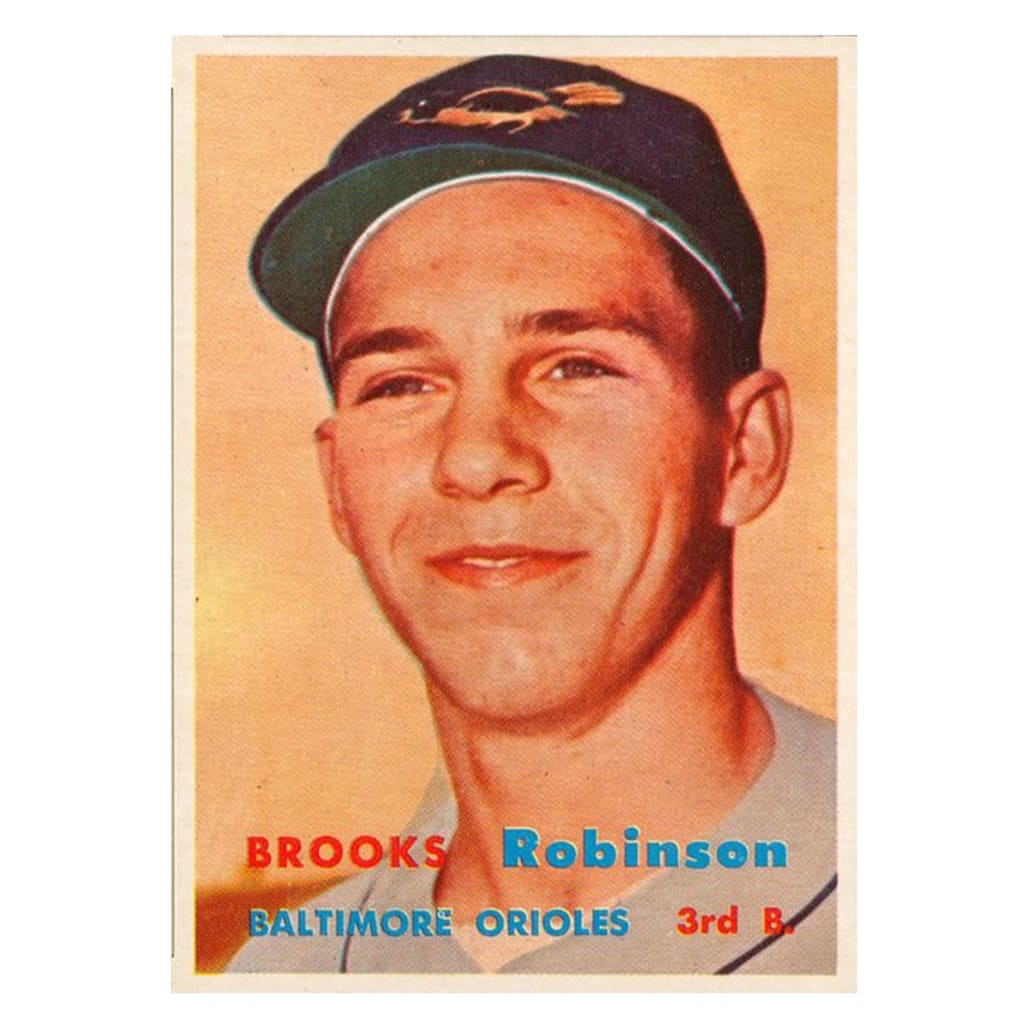
Brooks Robinson, 1957 Topps
The brightness of this classic card, Robinson's rookie card, is what catches you first. And look at the joy on Robinson's face -- and how young he looks! (He was just 19 years old entering the 1957 season.) The future Hall of Famer and franchise legend had a long career ahead of him.
Then look at the orange-on-orange tones, the pastel blue and orange lettering spelling out "Brooks Robinson, Baltimore Orioles, 3rd B." at the bottom of the card … it all looks so crisp and clean.
Jeffrey Brooks Price, the Baltimore native who submitted this card, also has a great story behind it -- and yes, his middle name has something to do with it.
"My middle name is Brooks, and I was born the year he retired from baseball," Jeffrey explains. "I bought it at a baseball card show when I was 11 years old after meeting him and getting my picture with him and his autograph. My son now has the same middle name, and the card will be also be his some day."
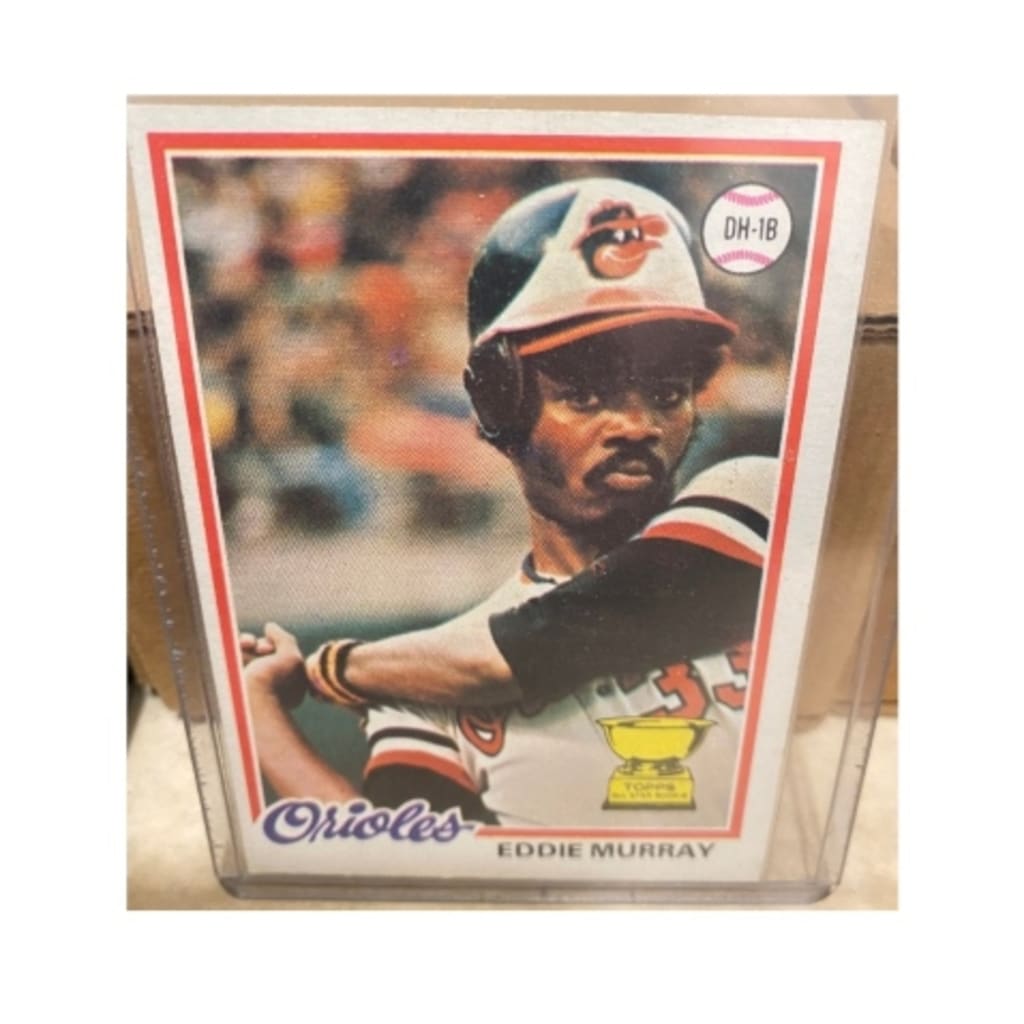
Eddie Murray, 1978 Topps
Murray hit the ground running when he debuted in the Majors in 1977, winning the American League Rookie of the Year Award after hitting .283 with 27 homers and 88 RBIs in 160 games for an Orioles club that won 97 games but missed the postseason.
The future Hall of Famer was first included in baseball card sets the next year. Murray’s 1978 Topps rookie card is a favorite of Joe DiGregorio of Rochester, N.Y., who wrote:
“The Orioles were my favorite team growing up and Eddie was my favorite player. I started collecting cards in 1986 when I was 13 years old, buying wax packs and putting together my set. Then I learned there were shops where you could buy individual cards! I knew I had to have Eddie Murray's rookie card, so I saved up the $20 and bought it. Still my favorite card in my collection.”
By 1986, “Steady Eddie” was an established star, having produced 275 homers and 1,015 RBIs in his first 10 seasons. He made seven All-Star teams and finished among the top five in the AL MVP voting five times in that span.
The switch-hitting Murray is one of only six players ever to reach both 3,000 hits and 500 home runs in his career. -- Thomas Harrigan
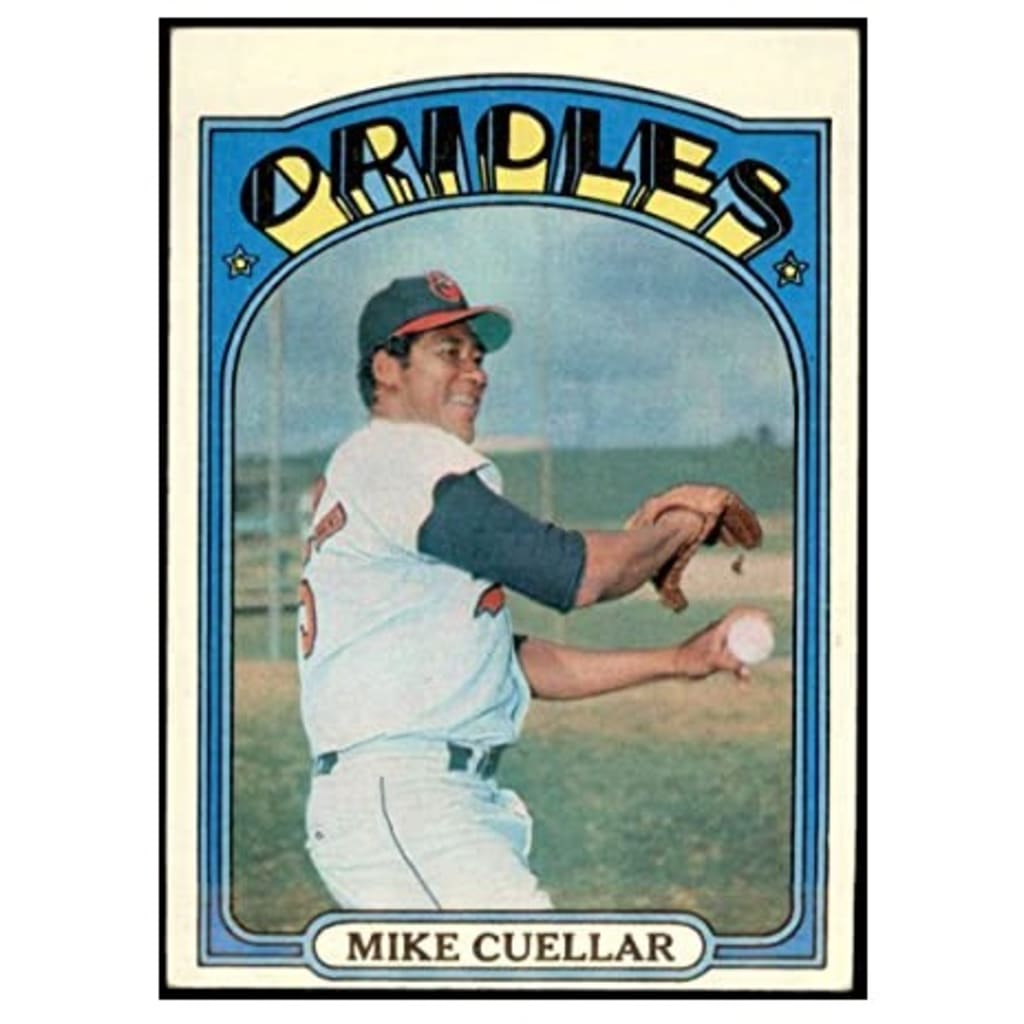
Mike Cuellar, 1972 Topps
Cuellar became the first Orioles pitcher to earn Cy Young honors in 1969, the first in a stretch of three straight 20-win seasons for the left-hander. Cuellar’s 1972 Topps card will forever hold special significance for Michael Brennan of Columbia, N.J., although it didn't have anything to do with his success on the mound.
“Back in 1972, I was 11 years old and really started collecting baseball cards like a true fanatic,” Brennan wrote. “We used to trade and flip cards every day at school. Our method of flipping was to stand about 15 feet from the brick wall outside of school and fling the cards like a frisbee toward the wall. The card closest to the wall would win the pile. One day, we were flipping and it started to drizzle. I got on a real winning streak with this Cuellar card, but it would get wetter each time I flipped it. Soon it was so wet that if I threw it just right it would actually stick to the wall. There was no way anyone could get closer to that! I actually ended up losing it part way through, but because the card was already so beat up, the other kid flipped it in the next round and I won it right back. This card netted me a couple of hundred cards that day (which I stuffed in my back pocket, probably with a rubber band). It may not be worth a penny to anyone else, but I will never sell it for any price.”
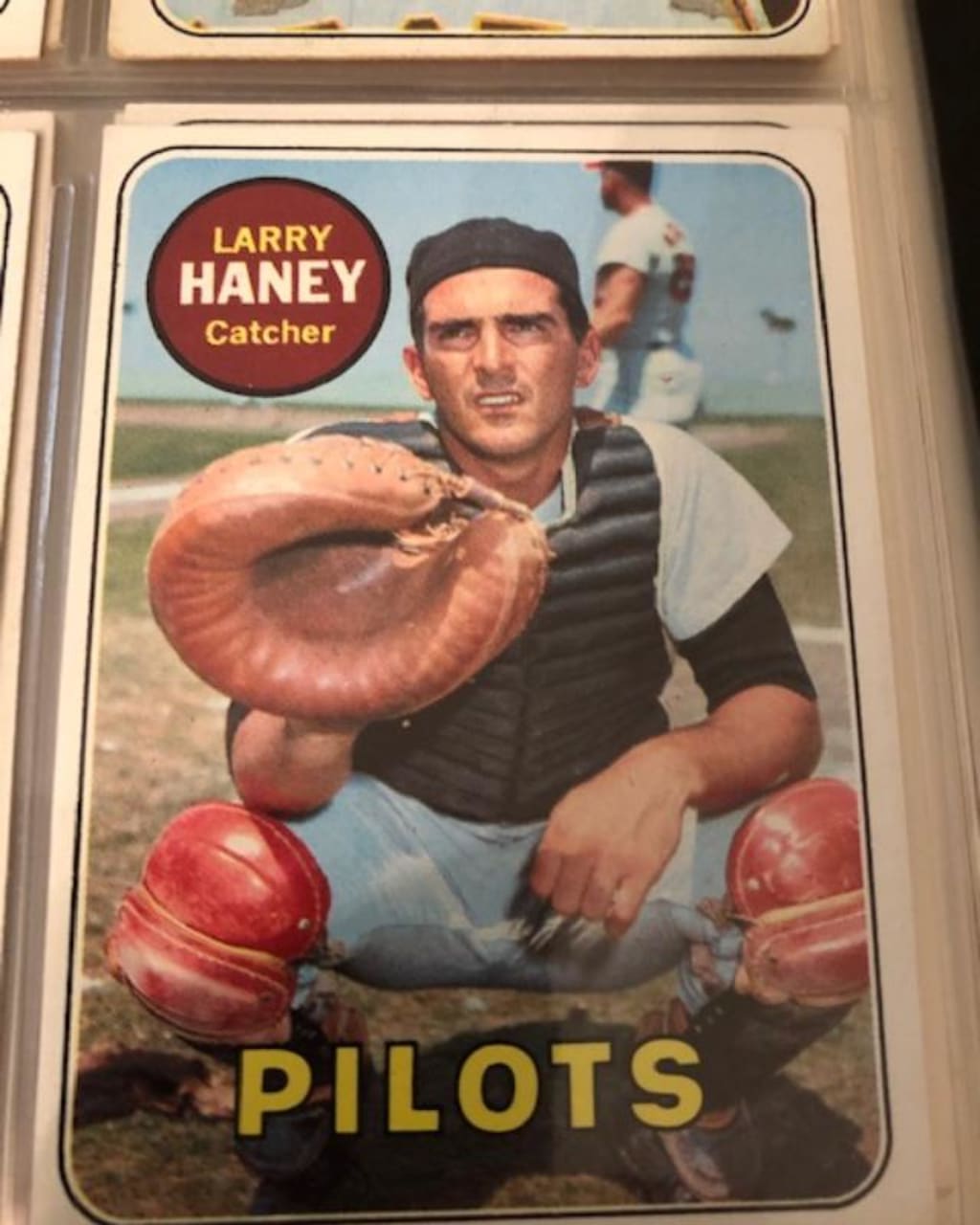
Larry Haney, 1969 Topps
Something's not right here, and we'll let the person who submitted this card in our survey explain.
"[It's a] reverse negative variation of Larry Haney," wrote Scott O. of Georgia. "What is wrong with this picture? A left-handed catcher?"
That's certainly not something you see every day ... or ever.
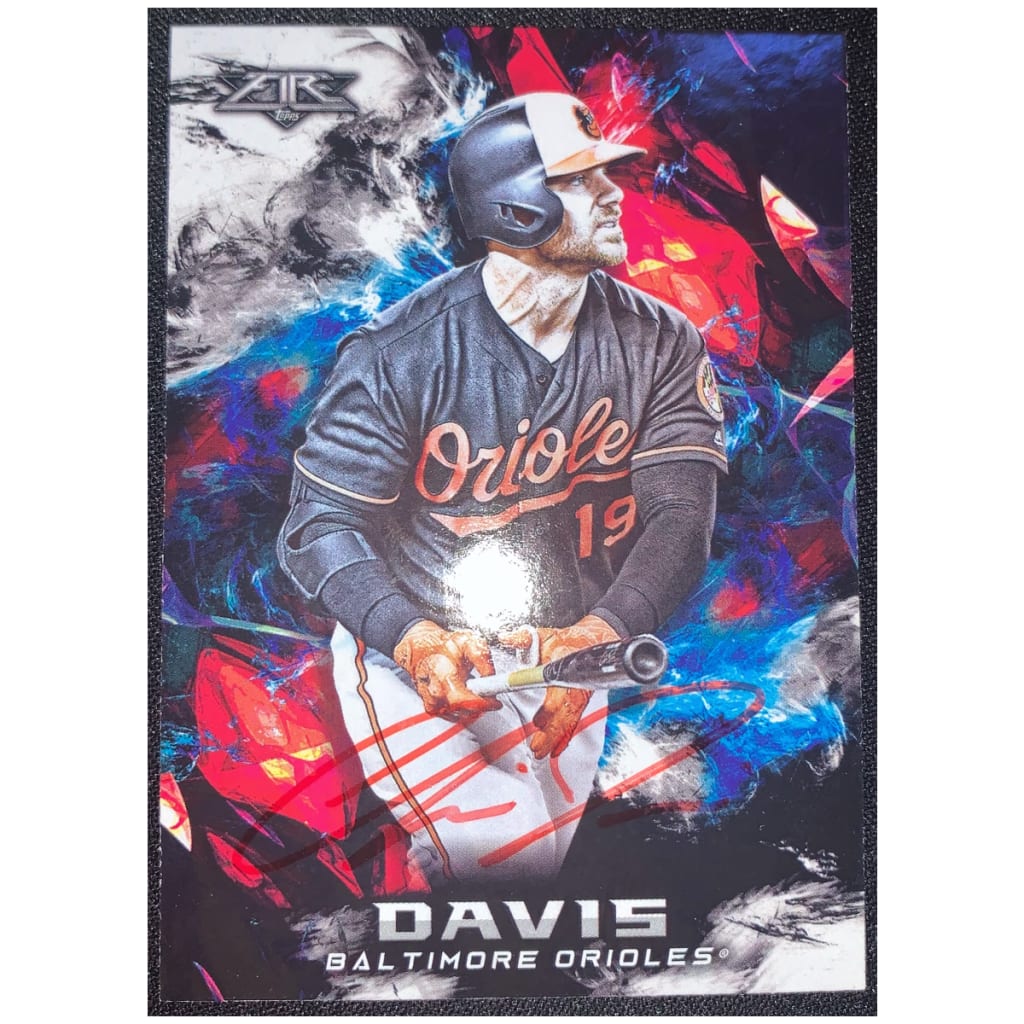
Chris Davis, 2018 Topps Fire
Orioles fan Brayden Meek of York, Penn., sent in this cool card of the recently retired slugger, who led the Majors in homers twice with the O's with 53 in 2013, and 47 in '15.
"I got this signed at Orioles FanFest 2019, and ever since, it’s been my favorite card," Brayden writes.
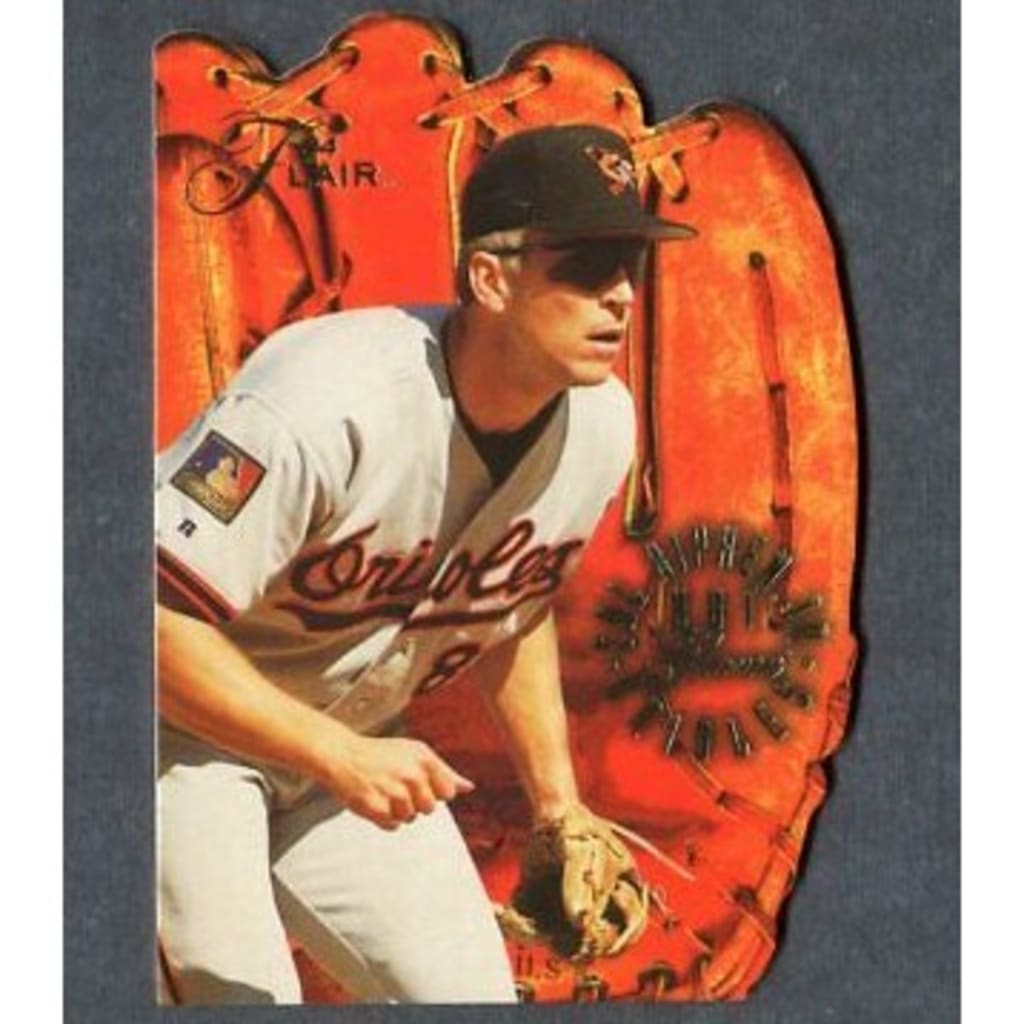
Cal Ripken Jr., 1994 Flair
While there have been lots of radical baseball card designs over the years, most cards typically have at least one thing in common: their rectangular shape.
The 1994 Flair set strayed from that template for a unique insert set known as “Hot Glove,” which put a select group of players on a card that was die cut to look like a baseball glove. In addition to the shape, these cards really stood out due to their vibrant orange color. Ripken was one of 10 players in the original set. -- Thomas Harrigan

Satchel Paige, 1953 Topps
While the front of the card says St. Louis, believe me, this is a legendary Orioles card. Hall of Famer Satchel Paige was a member of the Browns during their final three years in St. Louis before the team moved to Baltimore, earning two All-Star nods at age 44 and 45.
For Mike S. from Thorold, Ontario, though, this card marks a very special day.
“This was my wedding present from my wife 30 years ago. She conspired with a friend to acquire the card,” he wrote.
“I had been collecting [baseball] cards since I was eight years old. It was really the only way at that time to stay in touch with the game in Montreal where I grew up after the Royals left and before the Expos arrived. However, there were very few other [baseball] fans at that time, so trading was difficult.
“I can still smell the gum.” -- Nick Aguilera
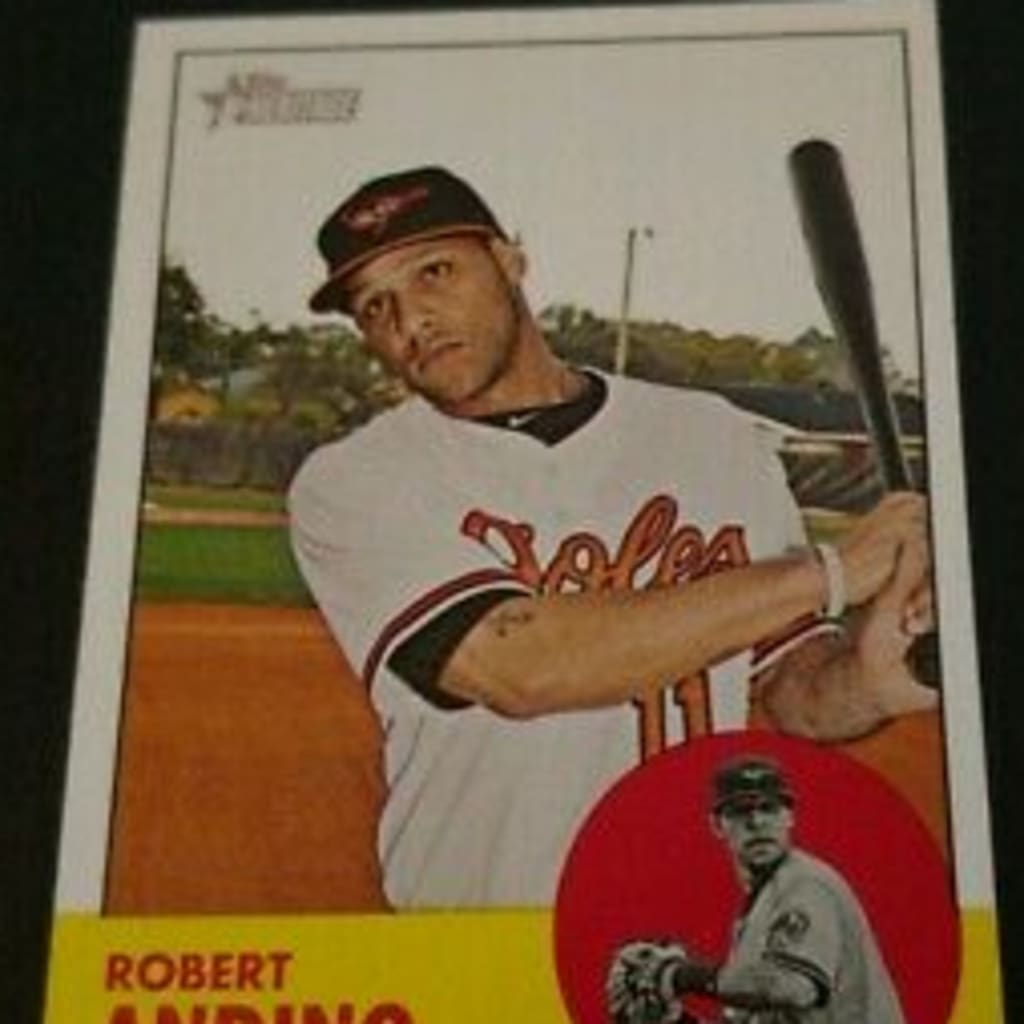
Robert Andino, 2012 Topps Heritage
He may not be a household name, but Andino and his career mean a lot to Dom A. of Harrisburg, Pennsylvania, who submitted this card in our survey.
"As a teenager, I witnessed the first postseason appearance by the O’s in over 15 years," Dom wrote. "It was a memorable time for my family who had been O’s fans for generations. At the center of one of the best games of the early 2010s was my favorite player, Robert Andino. During his short MLB career, the shortstop inspired me to make big impacts even when others underestimate you. I keep his baseball card on my work-from-home desk as inspiration."
It's truly amazing how a relatively unknown ballplayer can provide inspiration that lasts a lifetime. -- Manny Randhawa
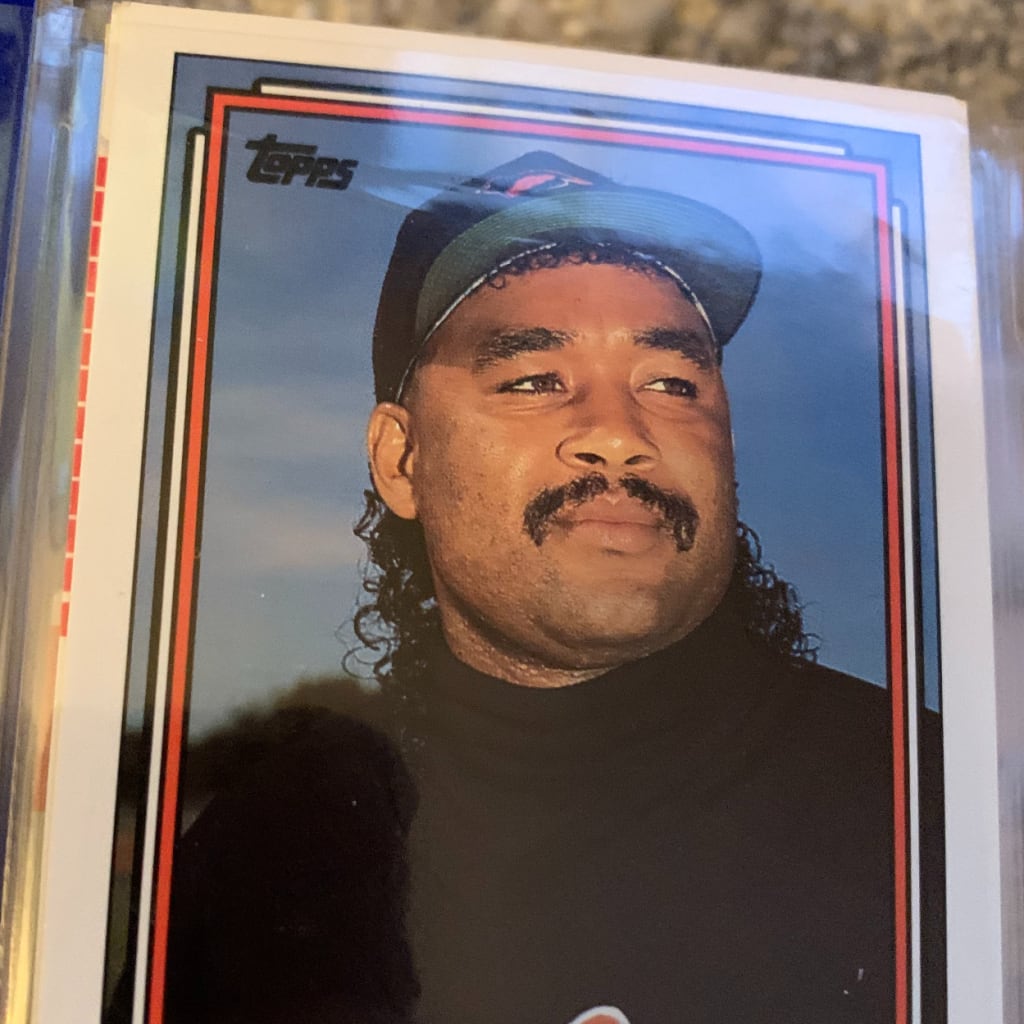
Jose Mesa, 1992 Topps
Mesa pitched for the Orioles? He sure did. We may remember him most for his years closing for the powerhouse Indians teams of the mid- to late-1990s, but the right-hander was a reliever for Baltimore before being traded to Cleveland midway through the 1992 season.
Mesa would go on to finish second in AL Cy Young Award voting in 1995, when he posted a 1.13 ERA and saved 46 games for the AL champion Indians. But let's focus on what really stands out with this card.
Brett S. of Cleveland, who submitted this gem for our survey, is succinct in identifying just that.
"Jose Mesa," Brett wrote. "Love the hair." -- Manny Randhawa
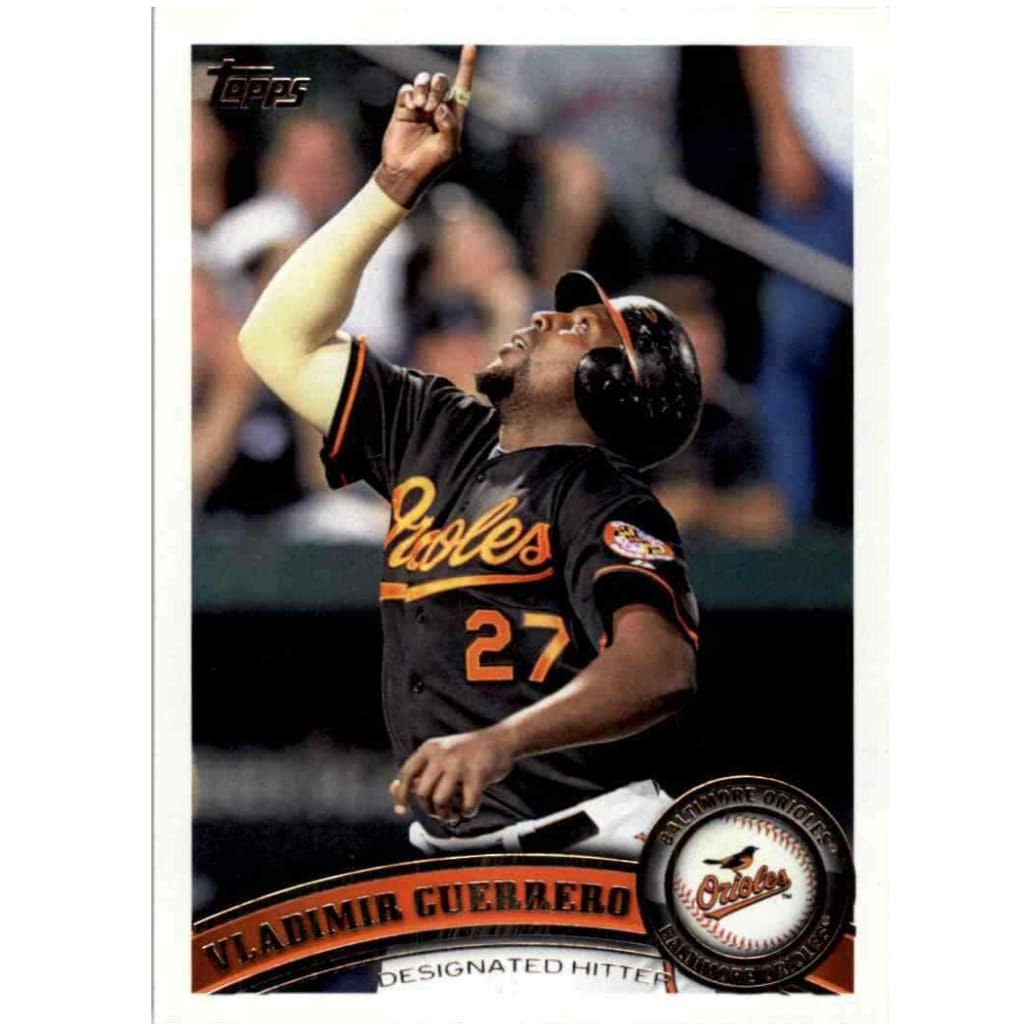
Vladimir Guerrero, 2011 Topps Update
After spending eight years with the Expos and six with the Angels, Guerrero signed a one-year deal with the Rangers and went on to become a big part of Texas’ lineup, making the AL All-Star team and hitting .300 with 29 homers, 115 RBIs and an .841 OPS over 152 games at age 35. Guerrero also got his first and only chance to play in the World Series, although the Rangers lost in five games to the Giants.
Fresh off that success, Guerrero hit the free-agent market again and signed with the Orioles. His time in Baltimore didn’t go nearly as well as his season with Texas, as he hit 13 homers and posted a .733 OPS over 145 games for the Orioles. It proved to be his final big league season; though he signed with the Blue Jays in 2012, he never played a game for them.
Guerrero’s stint with the Orioles is immortalized via this Topps’ ‘11 Update card, which shows the future Hall of Famer pointing to the sky as he crosses home plate in a black O's jersey. -- Thomas Harrigan